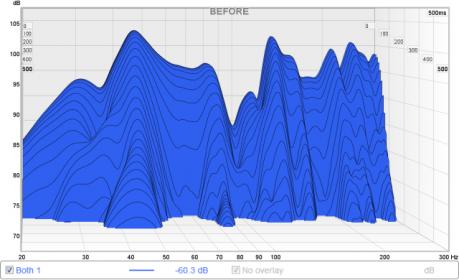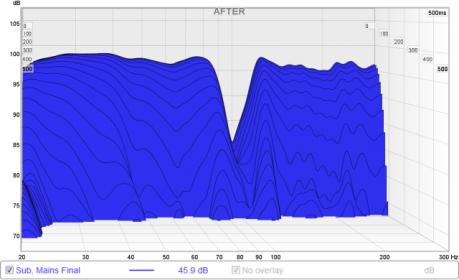I’m trying to make sense on how to improve bass performance in my 12’ x 16’ x 10’ (w x l x h) stereo music room. Yes, I'll be doing some measurements but I though thought that y’all might be able to get me started on the right track. Some reading has guided me towards use of multiple subwoofers to smooth out the <100Hz bass response. This makes general sense but how this can be implemented is less clear – a couple of quick questions:
The other part of the equation seems addressing speaker / boundary cancellations in the 100 to 300Hz region. I actually see this as more important to enjoying music but, unfortunately, more problematic as I don’t want to run subwoofers up to the these frequencies given localisation. My situation sees the main speakers against a pseudo front wall which is a 3’ bass trap and a near-field listening position that is 7’ from the back wall. I’ll do some measurements but guess that the major issue will be floor bounce. Is there a solution other than targeted room treatment for the 100 to 300Hz region?
Zydeco
- What is the minimum separation of subwoofers for the approach to be useful? My situation would see, for example, subwoofers in the rear corners being, say, 9’ apart (from the centre of the woofer). At what frequency, then, would these be seen as being co-located? Or, put another way, over what range would the subwoofers be separate sources? I was guessing that this would be 30 to 120Hz on the basis that the 9’ separation is roughly the wavelength of a 120Hz signal.
- What are the recommendations for subwoofers for this multi-sub approach? My brain tells me to go for a small, easily placed, subwoofers (e.g., Gallo TR-3 or SVS SB12-NSD) but that sense of audio nervosa edges me towards more larger capable subwoofers (e.g., SVS SB13-Ultra) in line with the capabilities of my main speakers (Horn + pro-audio driver).
- And how should one think of bass traps or Spatial Black Hole in a multi-sub set-up? I thought, at first, that bass traps violated the model of generating lots of modes from multi-subs but am now of the view that, designed correctly, the two approaches are complementary in that bass traps will reduce the ringing of a smooth listening position response. And, I guess, the Black Hole could also play a part at low frequencies at which there is effectively only one bass source?
The other part of the equation seems addressing speaker / boundary cancellations in the 100 to 300Hz region. I actually see this as more important to enjoying music but, unfortunately, more problematic as I don’t want to run subwoofers up to the these frequencies given localisation. My situation sees the main speakers against a pseudo front wall which is a 3’ bass trap and a near-field listening position that is 7’ from the back wall. I’ll do some measurements but guess that the major issue will be floor bounce. Is there a solution other than targeted room treatment for the 100 to 300Hz region?
Zydeco



